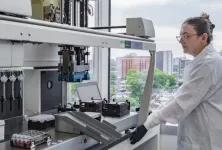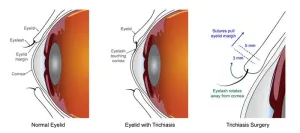(Press-News.org) In May, a major cyberattack disabled clinical operations for nearly a month at Ascension, a health care provider that includes 140 hospitals across the U.S. Investigators tracked the problem to malicious ransomware that had infected an employee’s computer.
Health care systems offer juicy targets for cybercrime because of the valuable personal, financial, and health data they hold. A 2023 survey of health information technology and IT security professionals reported that 88% of their organizations had experienced an average of 40 attacks during the previous year.
One key vulnerability has been the increasing complexity of their IT systems, says Hüseyin Tanriverdi, associate professor of information, risk, and operations management at Texas McCombs. It’s a result of decades of mergers and acquisitions forming larger and larger multihospital systems.
“After a merger, they don’t necessarily standardize their technology and care processes,” Tanriverdi says. “The health system ends up having a lot of complexity, with different IT systems, very different care processes and disparate governance structures.”
But complexity could also offer a solution to such problems, he finds in new research. With co-authors Juhee Kwon of City University of Hong Kong and Ghiyoung Im of the University of Louisville, he says that a “good kind of complexity” can improve communication among different systems, care processes, and governance structures, better protecting them against cyber incidents.
Complex vs. Complicated
Using data from 445 multihospital groups spanning 2009 to 2017, the team looked at the oft-repeated notion that complexity is the enemy of security.
They distinguished between two similar-sounding IT concepts that are key to the problem.
Complicatedness is a large number of elements in a system that interconnect and share information in structured ways.
Complexity occurs when a large number of elements interconnect and share information in unstructured ways — as when integrating systems after mergers and acquisitions.
Because complicated systems have structures, Tanriverdi says, it’s difficult but feasible to predict and control what they’ll do. That’s not feasible for complex systems, with their unstructured connections.
Tanriverdi found that as health care systems got more complex, they became more vulnerable. The most complex systems — with the largest varieties of health service referrals from one hospital to another — were 29% more likely to be breached than average.
The problem, he says, is that such systems offer more data transfer points for hackers to attack, and more opportunities for human users to make security errors.
He found similar vulnerabilities with other forms of complexity, including:
Many different types of medical services handling health data.
Decentralizing strategic decisions to member hospitals instead of making them at the corporate center.
Setting Data Standards
The researchers also proposed a solution: building enterprise-wide data governance platforms, such as centralized data warehouses, to manage data sharing among diverse systems. Such platforms would convert dissimilar data types into common ones, structure data flows, and standardize security configurations.
“They would transform a complex system into a complicated system,” he says. By simplifying the system, they would further lower its level of complication.
He tested the cybersecurity effects of creating such platforms. The result, he found, was that in the most complicated system, they would reduce breaches up to 47%.
Centralizing data governance reduces avenues for hackers to get in, Tanriverdi says. “With fewer access points and simplified and hardened cybersecurity controls, unauthorized parties are less likely to gain unauthorized access to patient data.”
He recommends supplementing technical controls with stronger human ones, as well: training users in cybersecurity practices and better regulating who has access to various parts of the system.
Tanriverdi acknowledges a paradox in his approach. Investing in a new layer of technology may introduce more IT complexity at first. But in the long run, it’s a good type of complexity that tames the existing — and more hazardous — kinds of complexity.
“Practitioners should embrace IT complexity, as long as it gives structure to information flows that were previously ad hoc,” he says. “Technology reduces cybersecurity risks if it is organized and governed well.”
“Taming Complexity in Cybersecurity of Multihospital Systems: The Role of Enterprise-wide Data Analytics Platforms” is published online in MIS Quarterly.
END
‘Good complexity’ can make hospital networks more cybersecure
By standardizing data, large health care systems can reduce vulnerability to hackers
2024-09-17
ELSE PRESS RELEASES FROM THIS DATE:
Up to one-third of antibody drugs are nonspecific, study shows
2024-09-17
Integral Molecular, a leader in antibody discovery and characterization, has published new research in the journal mAbs, revealing that as many as one-third of antibody-based drugs exhibit nonspecific binding to unintended targets. A serious concern, off-target drug binding is a significant cause of adverse events in patients, with the potential to even cause death. Analysis of antibody off-target binding across different phases of clinical development suggests this to be a major cause of drug attrition. Early specificity testing could improve drug approvals and patient safety.
Learn how antibody developers can use the Membrane Proteome Array™ to assess specificity ...
Shrinking the pint can reduce beer sales by almost 10%
2024-09-17
Reducing the serving size for beer, lager and cider reduces the volume of those drinks consumed in pubs, bars and restaurants, and could be a useful alcohol control measure, according to research published September 17th in the open-access journal PLOS Medicine. Theresa Marteau and colleagues at the University of Cambridge, UK, found that over a short intervention period, venues that removed the pint and offered two third pints instead, sold 10% less beer by volume compared with when pints were available.
When wine by the glass is offered in smaller servings, the amount sold ...
Unhealthy behaviors contribute to more coronary artery disease deaths in the poor
2024-09-17
Lower socioeconomic status is associated with higher rates of death from coronary artery disease compared to higher socioeconomic status, and more than half of the disparities can be explained by four unhealthy behaviors. Dr. Yachen Zhu of the Alcohol Research Group, U.S., and Dr. Charlotte Probst of the Centre for Addiction and Mental Health, Canada, report these findings in a new study published September 17th in the open-access journal PLOS Medicine.
Coronary artery disease, also known as coronary heart disease or ischemic heart disease, occurs when the arteries supplying the heart cannot deliver enough oxygen-rich blood due to plaque buildup, and is a major cause of death in the ...
Two common surgeries equally effective for treating blinding condition of the eyelid
2024-09-17
Trachomatous trichiasis, a potentially blinding condition where inward-turned eyelashes scratch the front of the eye, can successfully be treated by either of the two most common types of eyelid surgery, according to findings from a large comparison trial funded by the National Institutes of Health. In light of previous, smaller studies, which suggested that one of the commonly used surgery types had poorer outcomes, this study provides reassurance that either technique can treat the condition. The study, published in PLOS Neglected ...
NIH grant supports research into environmental factors regarding male fertility
2024-09-17
DETROIT — A grant from the National Institutes of Health will support ongoing research at Wayne State University investigating the consequences environmental factors may have on fertility in males.
The five-year, $3,082,404 grant from the National Institute of Environmental Health Sciences of the National Institutes of Health is led by Richard Pilsner, Ph.D., professor and the Robert J. Sokol, M.D., Endowed Chair of Molecular Obstetrics and Gynecology in the C.S. Mott Center for Human Growth and Development in the department of Obstetrics/Gynecology at Wayne State, and faculty member in the Institute of Environmental ...
Children’s National Hospital selected to lead next-generation BARDA Accelerator Network Special Populations Hub
2024-09-17
WASHINGTON (September 17, 2024) – Children’s National Hospital, widely recognized for its expertise and innovation in pediatric care, has been chosen by the Biomedical Advanced Research and Development Authority (BARDA) to lead the Special Populations Hub in the next generation of the BARDA Accelerator Network. BARDA, is part of the Administration for Strategic Preparedness and Response (ASPR) within the U.S. Department of Health and Human Services (HHS).
The next generation of the BARDA Accelerator Network builds on lessons learned from the first iteration of the network ...
What happens to patients when their GP retires or relocates?
2024-09-17
Norway introduced its Regular GP Scheme was introduced in 2001. This gave all citizens the right to choose a GP in their home municipality and facilitates personal continuity between the doctor and the patient.
These types of long-term doctor-patient relationships are associated with reduced use of emergency health services and lower mortality, both internationally and in Norway.
A widely discussed Norwegian study from 2022 showed that patients who had the same GP for more than fifteen years had a 25 per cent lower risk of dying compared to patients who had the same GP for one year or less.
However, there has been an increasing shortage of GPs in recent years. As of July 2024, just over ...
Cancer cells may be using lipids to hide from the immune system
2024-09-17
Cancer cells seldom start off stealthy. Quite to the contrary, they announce their presence to the immune system by planting chemical red flags right on their membranes. Once alerted, the body’s defenses can swoop in, destroying rogue cells before they can do much damage. Lying at the heart of this early warning system are lipids, fatty compounds previously seen by cancer biologists primarily as a fuel source for burgeoning tumors.
But now, a new study in Nature demonstrates that one particular lipid type is actually ...
NASA completes spacecraft to transport, support Roman Space Telescope
2024-09-17
The spacecraft bus that will deliver NASA’s Nancy Grace Roman Space Telescope to its orbit and enable it to function once there is now complete after years of construction, installation, and testing.
Now that the spacecraft is assembled, engineers will begin working to integrate the observatory’s other major components, including the science instruments and the telescope itself.
“They call it a spacecraft bus for a reason — it gets the telescope to where it needs to be ...
University of Health Sciences earns $5.3 million from NIH to boost cancer research, support emerging scientists
2024-09-17
A $5.3 million National Institutes of Health grant awarded to the University of Oklahoma Health Sciences will support advanced cancer research in Oklahoma. The Centers of Biomedical Research Excellence (COBRE) grant is designed to build research capacity and help early-career researchers establish independently funded laboratories.
This is the third and final phase of the COBRE grant, which was first awarded in 2012, followed by phase two in 2017. The grant has supported and paralleled the growth of OU Health Stephenson Cancer Center, Oklahoma’s ...
LAST 30 PRESS RELEASES:
Two Keck Medicine of USC Hospitals named Leapfrog Top Teaching Hospitals
World-first discovery uncovers how glioblastoma tumours dodge chemotherapy, potentially opening the door to new treatments
A fatal mix-up: How certain gut bacteria drive multiple sclerosis
New AI tool identifies not just genetic mutations, but the diseases they may cause
Deep-learning model predicts how fruit flies form, cell by cell
Combination pills for high blood pressure may simplify treatment, improve long-term health
Immune system keeps mucosal fungi in check
Neurons within the brain use simple rules to localize genetic messages
Electrodes created using light
Second-hand gift-giving is a well-deliberated decision
How human interaction drove evolution to make bears less aggressive
National Poll: Few parents offer teens guidance on healthy eating during holiday season
Cannabis derivatives could provide new ovarian cancer treatments
Raising strong yeast as a petroleum substitute
Clues to the origin of hot Jupiters hidden in their orbits
Canada’s reduced pledge to Global Fund will impact domestic health
1 in 4 children with major traumatic injuries not cared for in pediatric trauma centres
Duke and Duke-NUS’ joint cross-population research to uncover "East-West" differences in disease and care
Scientists to ‘spy’ on cancer- immune cell interactions using quantum technology breakthrough
Tech savvy users have most digital concerns
Making lighter work of calculating fluid and heat flow
Normalizing blood sugar can halve heart attack risk
Lowering blood sugar cuts heart attack risk in people with prediabetes
Study links genetic variants to risk of blinding eye disease in premature infants
Non-opioid ‘pain sponge’ therapy halts cartilage degeneration and relieves chronic pain
AI can pick up cultural values by mimicking how kids learn
China’s ecological redlines offer fast track to 30 x 30 global conservation goal
Invisible indoor threats: emerging household contaminants and their growing risks to human health
Adding antibody treatment to chemo boosts outcomes for children with rare cancer
Germline pathogenic variants among women without a history of breast cancer
[Press-News.org] ‘Good complexity’ can make hospital networks more cybersecureBy standardizing data, large health care systems can reduce vulnerability to hackers






